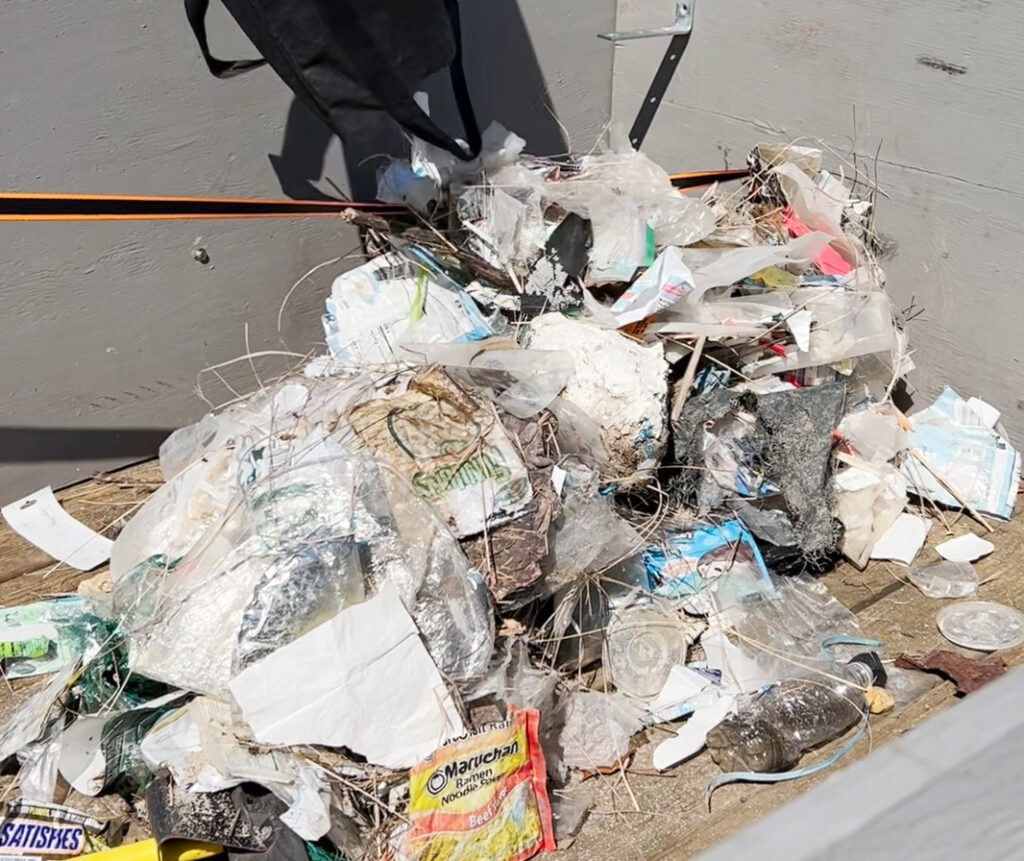East End osprey population continues to thrive, report shows

Marina DeLuca grew up in East Marion and considers ospreys a “staple” of her upbringing.
She has witnessed the increase in the number of ospreys that are now seen on the North Fork, compared to when she was growing up.
“I went to Oysterponds Elementary School, and every morning in March, we’d drive over the causeway and it was the most exciting thing when the ospreys were back,” Ms. DeLuca said. “There were maybe four nests out there at the time; now there are even more, and I think that it’s great to have been able to witness some of that continued success in my lifetime.”
Ms. DeLuca has contributed to the species’ population growth through her work as Group for the East End’s environmental associate. Although her father, Robert DeLuca, serves as its president, she has earned her place at the organization. Ms. DeLuca recently graduated from Union College, where she completed a B.S. in biology and a B.A. in music.
Group for the East End “has been monitoring local osprey populations, recording crucial information and assisting conservation efforts for more than 30 years,” the organization said in a press release.
Last summer, volunteers monitored 477 nesting sites in the five East End towns, documenting 353 active nesting pairs that produced 505 fledglings.
In Southold Town, 183 sites were monitored, 136 of which were active, producing 193 fledglings. In Riverhead, 25 nesting sites were monitored, 19 of which showed activity and produced 29 fledglings.
New York State listed the osprey as an endangered species in 1976. The decline of the birds population in the 1950’s through 1970’s was caused by DDT-induced eggshell thinning. DDT, or Dichlorodiphenyltrichloroethane, a tasteless, colorless and odorless compound which was developed as an insecticide, later became widely known for its negative environmental impacts.
The chemical’s eggshell thinning effects decimated osprey reproductive rates and set the species on a path to extinction throughout New York State.
It’s really a wonderful story about conservation success
Marina DeLuca
DDT use was banned nationwide in 1972, but it took some time for the osprey population to rebound. The species’ status was adjusted to “threatened” in 1983, and again in 1999 to “species of special concern,” where it remains designated today.
Apart from the threat of pesticides, destruction of wetland areas for housing and commercial development “carved away the osprey’s nesting habitat at an accelerating pace,” the group said.
In response, Group for the East End has installed and maintained more than 250 osprey nesting platforms over the past 30 years, an initiative that proved essential for the ospreys’ recovery.
The organization’s other efforts have included partnering with PSEG Long Island in 2021 on hazard mitigation measures to prevent nesting on utility poles and relocate nests already built on them.
In addition, they surveyed approximately 600 area utility poles to asses potential risks to nesting ospreys and those posing the most potential danger to birds and their nests were outfitted with protective guards to prevent nests being built on them.
Ms. DeLuca called the Group for the East End’s partnership with PSEG Long Island “invaluable.”
The organization also credits changes in fishing regulations for the bump in the osprey population — specifically limits on catches of bunker, increasing their availability as a food source for ospreys.
Group for the East End plans to host a training for PSEG Long Island staff to discuss the species’ history, as well as how to identify hazards and address potential conflicts. They’ll also continue to survey high-risk areas and work with PSEG Long Island to install mitigation measures.
“I think it’s really a wonderful story about conservation success,” Ms. DeLuca said. “I mean, we hear so often that a lot of the environmental fights kind of feel quite fruitless and this is an example where it wasn’t.”








